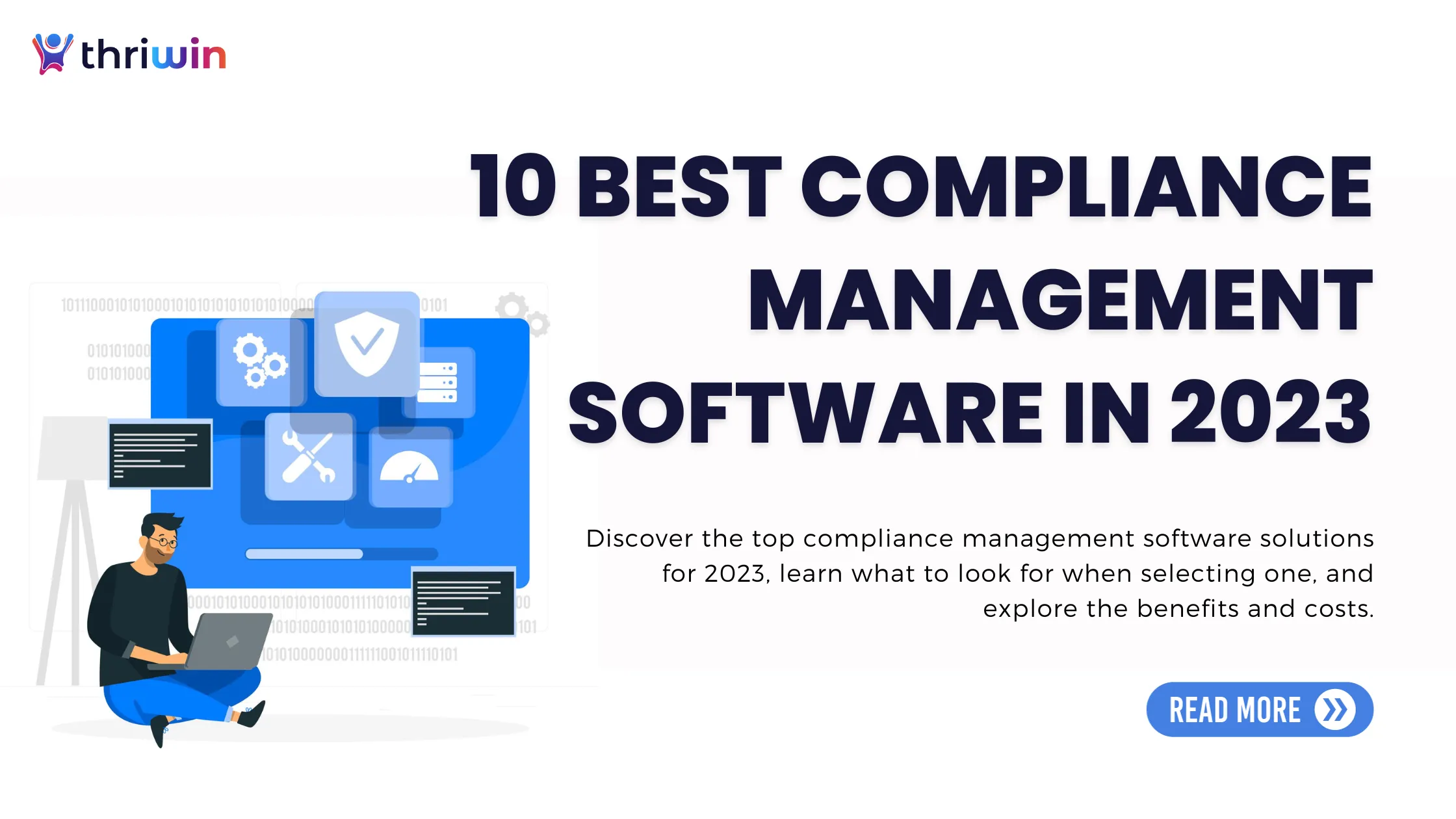Ever wondered what a ‘compliance report' is? You're not the only one. In today's business world, these reports are super important. They show that a business is doing things correctly, as per the law. And the best part? A great compliance report can make a business look good to others. If you're trying to figure out how to make one of these reports, don't worry. This guide will help. Let's make it simple and easy!
What is a Compliance Report?
A compliance report is a pivotal document that showcases how a business aligns with relevant regulatory guidelines. It serves as a testament to an organization's commitment to transparency, accountability, and adherence to industry standards. Typically, this report provides an overview of the assessed areas, the assessment methods, findings, and any subsequent recommendations or actions. While often produced to fulfill legal or contractual obligations, these reports also offer insights into operational efficiencies and areas of potential risk, reaffirming a company's dedication to ethical and responsible operations.
Why Compliance Reporting is Crucial
Compliance reporting is undeniably vital in today's business landscape. Beyond meeting regulatory demands, it is an emblem of a company's commitment to integrity, transparency, and ethical operations. By following set standards and laws, these reports act as a protective barrier against legal troubles. They also establish a strong trust bond with everyone involved, from clients to investors. Moreover, compliance often translates to optimized operations, as many guidelines are rooted in best practices. Compliance reporting isn't merely a bureaucratic task; it's a cornerstone for sustainable and responsible business growth.
The Role of Compliance in Marketing of Modern Business
Compliance is a fundamental aspect of running a successful and ethical business. It provides structure, accountability, and safeguards for various operations, especially in marketing. Businesses that adhere to regulations build trust with their audience while protecting themselves from legal and reputational risks. Here’s how compliance impacts marketing:
- Protecting Brand Reputation
A misstep in advertising or communication can compromise a brand's image in seconds. Ensuring marketing efforts follow established guidelines, such as including privacy policies on websites or gaining consent for email subscriptions, prevents issues that could harm credibility. Transparent practices help reinforce the public's trust in the brand.
- Managing Risks in Marketing
Compliance minimizes the chances of legal penalties. For example, email marketing must adhere to regulations like GDPR or CAN-SPAM. This means obtaining explicit permission before sending emails and offering clear opt-out options. Similarly, advertising campaigns must avoid false claims or misleading tactics to avoid regulatory scrutiny.
- Streamlining Marketing Operations
Rules often align with best practices. For instance, data collection for analytics should comply with privacy regulations. Marketing teams can use this data confidently, knowing it has been gathered responsibly. A clear and visible privacy policy on landing pages encourages more users to engage, knowing their information is being handled properly.
- Building Customer Trust
Clear and honest communication about data collection and usage increases customer confidence. Whether cookie consent notifications, disclaimers in influencer partnerships, or transparent advertising, ethical practices show respect for user rights, fostering stronger relationships with audiences.
- Staying Competitive
Compliance opens doors to partnerships and customer segments that prioritize ethical practices. Businesses demonstrating accountability in their marketing efforts often stand out, attracting privacy-conscious consumers and other stakeholders.
Marketing Functions Where Compliance Matters
- Email Campaigns: Obtain consent, avoid misleading subject lines, and include opt-out links.
- Digital Ads: Respect platform rules and disclose sponsored content where applicable.
- Social Media: Ensure all collaborations and promotions are properly disclosed.
- Content Marketing: Avoid copyright violations and support all claims with reliable evidence.
- SEO Strategies: Follow approved practices to prevent penalties.
- Event Promotions: Clearly communicate how attendee data will be used and gain necessary permissions.
- Video Marketing: Follow advertising guidelines and disclose any sponsored content.
By embedding compliance into marketing strategies, businesses protect their reputation, reduce risks, and create meaningful connections with their audiences.
Which Industries Require Compliance Reports?
Alright, let's break this down. Different businesses, different rules, right? So, it's not a one-size-fits-all deal when we talk about compliance reports.
Here's a quick rundown on who needs what:
Financial Services: Think banks, credit unions, and the like. For them, it's all about ensuring their money matters are up to par. They're keeping tabs on transactions, ensuring no shady money-laundering business is going on, and of course, making sure everyone's personal data is locked up tight.
- Healthcare: Ever worried about someone else peeking at your health records? That's where compliance comes in. Hospitals and clinics ensure our personal health info stays private; they provide top-notch care, and guess what? They're also making sure that the bill you get is legit.
- Manufacturing: When you buy a product, you trust it's safe, right? Manufacturers are on the hook for that. They ensure products are top-quality and follow safety protocols, especially when dealing with hazardous stuff. And let’s not forget the environment—they've got to play nice with Mother Nature, too.
- Nonprofits: They may not be out to make a buck, but they still have rules to follow. They ensure that the funds folks donate are being used correctly So, no matter the industry, these compliance reports are like report cards, showing everyoneTransparent governance? Check. Making sure every penny is spent wisely? Absolutely.doing their homework and playing by the rules. Different sectors and reports aim for that gold star in transparency and ethics!
The Importance of Compliance Reports
- Compliance reports have become essential across industries, especially with the rise of AI-driven tools. These reports ensure businesses meet regulatory standards while maintaining data integrity, which is indispensible for AI systems that depend on high-quality, industry-specific data to function effectively. Poor or incomplete data can lead to costly errors. For instance, low-quality patient data in healthcare may result in misdiagnoses, risking lives and exposing organizations to legal and financial liabilities.
- In regulated industries like finance, IT, and healthcare, compliance reports are vital for ensuring sensitive data is handled responsibly and in line with laws like GDPR in Europe or HIPAA in the U.S. They strike a critical balance, allowing AI innovation while safeguarding privacy, and security. By providing a structured approach to monitoring and reporting, compliance reports are not just about avoiding penalties—they are indispensable for ethical, accurate, and forward-thinking business practices.
Let's dive a bit deeper:
- Legal Repercussions: Here's the thing: laws and regulations aren't just guidelines; they're mandatory. Ignoring them can land businesses in hot water—fines, sanctions, or even a courtroom drama. A solid compliance report is like a get-out-of-jail-free card. It shows authorities that a business is playing by the rules, shielding it from legal hiccups.
- Business Reputation: In the age of social media and instant news, reputation is everything. One misstep, and it's all over the headlines. Compliance reports act as a stamp of approval. They signal partners, customers, and competitors that a business isn't cutting corners. It's a way of shouting from the rooftops, "We're trustworthy!"
- Operational Efficiency: This might surprise some, but compliance is more than dodging problems. Many of these guidelines and regulations are built on industry best practices. So, by adhering to them, businesses aren't just avoiding pitfalls; they're optimizing their operations. It’s like following a tried-and-tested recipe to success.
Types of Compliance Reports
Diving into the realm of compliance, one quickly realizes that it's not a monolithic structure. Compliance reports vary, catering to different needs and contexts. Here’s a closer look at the three main types:
- Regulatory Compliance Reports: These are the heavyweights, ensuring businesses are in sync with the broader rules set by governments or overarching industry bodies. From adhering to environmental protocols to meeting financial disclosure requirements, these reports testify that a business is playing by the big-league rules.
- Internal Compliance Reports: When looking within, these reports center on a company's dedication to its internal standards and procedures. Whether it’s ethical guidelines, internal operational standards, or even unique quality metrics the company upholds, these reports ensure that a business walks its talk.
- Industry-specific Compliance Reports: Every industry has its own set of nuances and specificities. A tech company has different compliance concerns than, say, a food processing unit. These reports are tailor-made, addressing the unique standards and regulations specific to a particular industry.
Tips and Best Practices for Crafting Compliance Reports
Navigating the intricate world of compliance reporting can feel like walking a tightrope. However, it can become much more manageable with the right approach and insights. Let's unpack some essential tips and best practices:
Common Mistakes to Avoid:
- Vagueness: One of the primary pitfalls in reporting is ambiguity. It’s crucial to be specific and provide precise data points, making the report's content easily understandable and actionable.
- Jargon Overload: While industry-specific terms might be second nature to you, remember that only some people are familiar with them. It's always a good practice to simplify language or explain technical terms.
- Unsupported Claims: Every statement in a compliance report should be backed by data or evidence. Claims must be backed up to ensure the report's credibility and, by extension, the organization's.
Utilizing Compliance Software:
Technology has changed the game in nearly every field, and compliance reporting is no exception. Compliance software tools can streamline processes, from collecting data across various departments to analyzing it for insights. These tools often have built-in templates and frameworks tailored for specific industries, making report generation more efficient and standardized.
Tips for Effective Communication:
- Clarity: The essence of a good report lies in its clarity. Always aim to present information in a straightforward manner, avoiding unnecessary complexities.
- Conciseness: While it's essential to be thorough, brevity remains crucial. Focus on presenting the most pertinent information without excessive elaboration.
- Visual Aids: A picture is worth a thousand words. Charts, graphs, and infographics can make data more digestible and highlight key points effectively.
In wrapping up, remember that the ultimate goal of a compliance report is to communicate—whether showcasing adherence to regulations, highlighting areas of improvement, or simply updating stakeholders. You can make the process efficient and impactful by sidestepping common pitfalls and harnessing best practices.
Step-by-Step Guide to Writing a Compliance Report
Crafting a compliance report is much like assembling a puzzle; each piece has its place, and when put together correctly, it paints a clear picture. But where to start? Let’s navigate this process step by step:
1. Identify the Purpose and Scope: Before anything else, ask the crucial questions. Why are you writing this report? Who's the intended audience? What timeframe does it cover? Having a clear understanding of the report’s objectives and its scope lays a solid foundation.
2. Conduct Research and Data Collection: This is where the groundwork happens. Dive into databases, conduct interviews, or use software tools to gather all relevant information. Ensure your data is both current and accurate.
3. Develop a Draft Outline: Plot your report's structure with the data in hand. Think of this as the blueprint—it'll guide you on where each piece of information should go, ensuring a logical flow.
4. Write the Executive Summary: This is your elevator pitch. In a concise manner, highlight the report's main points, giving readers an at-a-glance understanding of what to expect.
5. Detail the Methodology: Transparency is key. Outline how you went about your data collection and analysis, giving credibility to your findings.
6. Present Findings and Recommendations: Lay out what you discovered. Where does the organization shine in terms of compliance? Where are the gaps? And most importantly, provide actionable recommendations on how to bridge these gaps.
7. Include Any Relevant Attachments: Sometimes, there's supplementary information—charts, detailed data analyses, or related documents—that provides additional depth. Attach these to support your findings.
8. Review and Edit: A fresh set of eyes can be invaluable. Review the report for clarity, coherence, and accuracy. Ensure there's no jargon and the content is easily digestible.
9. Gain Approvals: Before it goes out the door, secure necessary sign-offs. This could be from senior management, legal teams, or other relevant stakeholders.
10. Distribute the Report: Once finalized, share the report with its intended audience. Whether it's internal departments, regulatory bodies, or the public, ensure it reaches the right hands.
Sample Compliance Report

You can customize the placeholders (like [Insert Date] or [Your Name/Department]) with the actual data. This format provides a clear and organized structure, making it easy for readers to understand and navigate.
Ready to Simplify Your Compliance Journey? Try Thriwin Today!
Compliance can be tricky. There are so many rules and so little time. Need an easier way?
Enter Thriwin's Compliance Management System. Our platform is designed to make it easy for modern businesses to track and ensure compliance across the organization. Whether you're a startup looking to establish your compliance groundwork or an established firm wanting to optimize your processes, Thriwin is the partner you've been searching for.
With intuitive features, real-time data tracking, and customizable dashboards, you'll have everything you need at your fingertips. Say goodbye to endless spreadsheets, missed deadlines, and compliance headaches. Embrace a solution that evolves with you, supports your growth, and ensures you're always a step ahead.
So, are you ready to revolutionize your compliance journey? Experience the Thriwin difference today!
FAQ:
1. What are the key components of a compliance report for data collection practices?
A compliance report for data collection should include:
- An outline of what data is collected (e.g., personal information, location, preferences).
- A summary of user consent mechanisms and privacy policy accessibility.
- Steps taken to comply with regulations like GDPR, CCPA, or HIPAA.
- Details on how data is stored securely and any third-party sharing policies.
2. What compliance points should be addressed in SMS marketing campaigns?
To comply with SMS marketing regulations like TCPA (Telephone Consumer Protection Act), include in your report:
- Documentation of opt-in consent from recipients.
- A clear option for users to unsubscribe by replying with STOP or similar keywords.
- Details of the frequency and content of SMS messages.
- Confirmation that sensitive data is not shared through SMS channels
3. How can a compliance report help with cold calling regulations?
A compliance report for cold calling should include:
- Verification that all call lists are scrubbed against the Do Not Call (DNC) registry.
- A record of caller identification, ensuring transparency.
- Documentation of call times to confirm adherence to allowable hours.
- Policies for handling consumer requests to opt out of future calls.
4. What compliance practices are crucial for email marketing campaigns?
Key practices to include in the compliance report for email marketing are:
- Confirmation of recipient opt-in and tracking consent logs.
- Inclusion of opt-out/unsubscribe links in every email.
- Accurate sender identification with contact details, including a physical address.
- Ensuring email content complies with truthful marketing practices and avoids spam triggers.
5. How do I report on data handling compliance for a landing page?
When writing a compliance report for landing page data handling, include:
- A description of how data is collected (e.g., forms, cookies).
- Steps to ensure compliance with privacy regulations like GDPR or CCPA.
- Details on where the Privacy Policy and Terms of Service links are displayed.
- Security measures to protect user data from breaches or unauthorized access.
- Document the system in place for tracking and honoring these requests.
%201.svg)


.avif)



